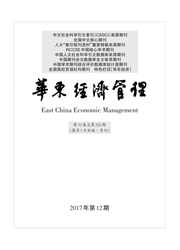

 中文摘要:
中文摘要:
文章研究构建了旅游经济综合评价指标体系,结合因子分析获得长三角区域旅游经济的综合得分,以此为基础,结合引力模型探讨了区域旅游经济空间联系,根据区域旅游经济联系总量和最大引力线数量确定了区域旅游经济的分级区域,并利用断裂点公式分析了中心区域与二级节点的旅游经济辐射范围。研究得出以下结论:与2006年相比.2012牟长三角各区域的旅游经济联系量和旅游经济联系总量均明显增加;长三角旅游经济空间联系呈现出以上海为一级节点区域,以苏州和杭州为二级节点区域的空间格局,空间联系的密集区域主要集中在上海、苏州、无锡、杭州、嘉兴和常州,中心区域与二级节点均未发生变化,但三级节点仍处变动中;长三角旅游经济空间联系中心区域和二级节点的辐射范围均有一定程度的拓展?
 英文摘要:
英文摘要:
This paper constructs the comprehensive evaluation system of tourism economy and obtains regional tourism econo my composite score in Yangtze River Delta by factor analysis. Based on this, it analyzes the spatial linkage of regional tourism economy by gravity model, identifies the central region according to the number of the largest attraction linkages and total spa tial linkages of regional tourism economy and calculates the radiation range of the first and second-level central regions hy breaking point formula in the Yangtze River Delta. The conclusions are the followings: compared to the level in 2006, the quantity of regional tourism economy spatial linkage and total amount of tourism economy spatial linkages have increased obvi ously in 2012; Shanghai is a core region, Suzhou and Hangzhou are the second nodes regions as to the spatial linkage pattern in the Yangtze River Delta; the intensive spatial linkage areas are mainly concentrated in Shanghai, Suzhou, Wuxi, Hang zhou, Jiaxing and Changzhou; the center region and the two nodes regions are stable but the regions in the third nodes are changing; the radiation range of the center region and two nodes have expanded to some degree in the Yangtze River Delta.
 同期刊论文项目
同期刊论文项目
 同项目期刊论文
同项目期刊论文
 期刊信息
期刊信息
